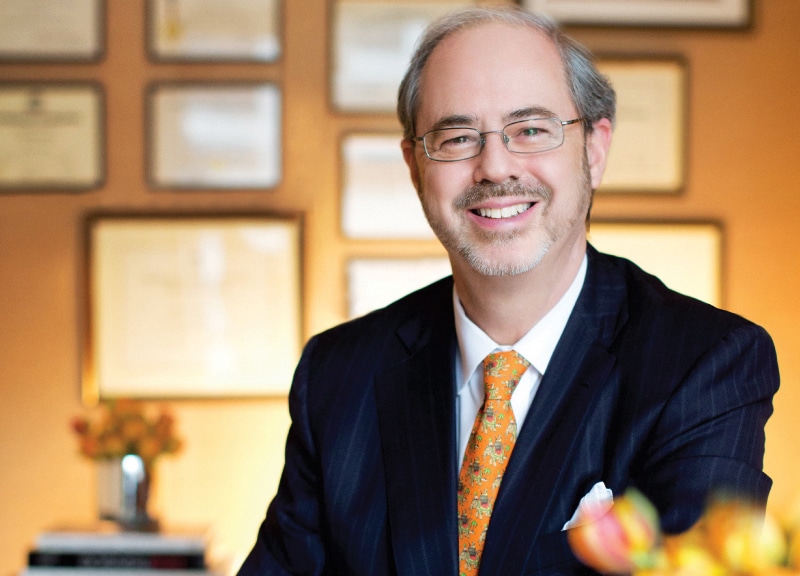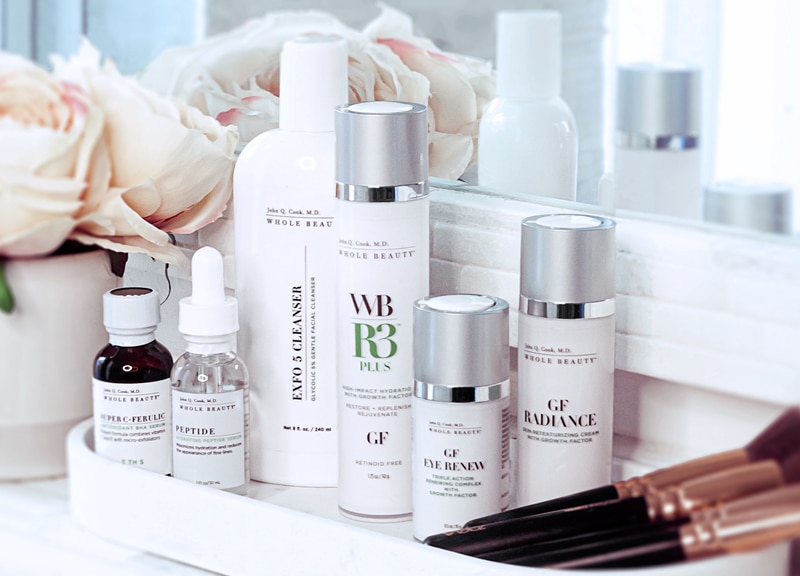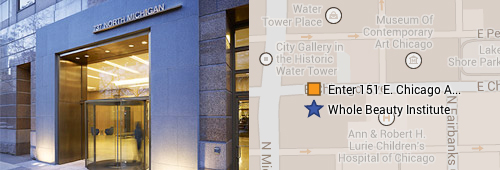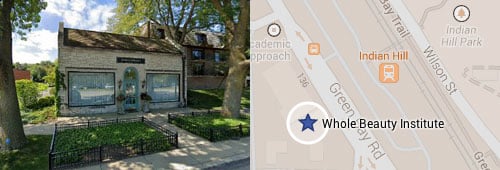Education and Credentials

Awards and Recognition

REAL PATIENT RESULTS
See the difference experience makes. View the full before & after photo gallery of Dr. Cook and his team.
Dr. John Cook’s Breast Surgeon Biography
Learn More About John Q. Cook, M.D. with More Than 20 Years’ Experience in Breast Surgery
If you are seriously considering breast surgery of any sort, it is very important, in my opinion, for you to understand the taste and background of your surgeon. Breast surgery, after all, is really quite subjective, and what might appear beautiful to one person might seem forced or artificial to another.
If I can share with you my background as a plastic surgeon who is very interested in creating beautiful breasts, it will help you to decide whether I am the right surgeon for you.

Contact Whole Beauty® Institute in Chicago or Winnetka. Call 312-751-2112 or send a message online.
Request a consultIn all of my work as a plastic surgeon I have a very strong naturalistic bias. My goal is to create a breast that is, whenever possible, close to the form of nature. This doesn’t mean that I necessarily create small breasts or large breasts, but I always try to create breasts that somehow makes sense for an individual’s body and that are aligned with the patient’s goals.
How did I develop my visual aesthetic? Some of it came to me by luck and some of it by hard work and persistence on my part. The lucky part is that I was raised in a family where art was always very important. I grew up in a neighborhood where there were quite a few artists who were friends of my parents, and it always seemed natural to me that one would be very interested in observing and capturing the natural world. As I look back, it seems that I always have had fairly strong opinions about what is beautiful and what is not.
When I go to a different city for a plastic surgery meeting, I often find that I get more value out of the visits to the art museum in that city than from the presentations at the plastic surgery meeting, no matter how well they are constructed. This is due to the fact that artists spend their entire lives considering three-dimensional form, as well as issues of proportion and balance, so they have a natural edge over the rest of us. If you spend enough time looking carefully at their work and, in some cases, studying their writings, it is possible to assimilate some of their very developed perceptions.
I don’t think there any simple physical formulas for beauty, but I do think that if you spend enough time studying it and refining your perceptions, you can begin to develop an internalized sense of it. I also believe that if you do these things, you can be of genuine help to your patients.
When I completed my training in plastic surgery and became an attending surgeon at Rush University Medical Center, I was very fortunate in that many of the general surgeons who had trained me at Rush in the past trusted me with their patients for breast reconstruction.
Breast reconstruction surgery forces you to a higher level of performance than would be the case if you just started out doing breast augmentation. You have to solve a number of complex three-dimensional issues in the creation of the reconstructed breast as well as in the shaping of the opposite breast to bring the two into proper balance and harmony.
Every one of my breast reconstruction patients has been my teacher. Thanks to my patients, I have been able to develop an extensive collection of techniques that address issues of form, structure, volume, and balance.
Meet John Q. Cook, M.D.
The Whole Beauty® Institute team is directed by Dr. John Q. Cook, a recognized leader in Aesthetic Plastic Surgery. Every team member has extensive experience and shares Dr. Cook’s passion for natural results. We form a bond of trust with our extended patient family.Learn More
I am particularly proud of my work in the field of structural breast surgery. With the techniques of structural breast surgery, it is possible to create natural volume in the upper portion of breast when I carry out a breast lift or breast reduction. I can also obtain deep structural anchoring, which helps to maintain the breast in proper position, and I can limit the scars, particularly in the inner aspect of the breast. Structural breast surgery has been a major focus of my intellectual efforts in the last 10 years.
I hope that the information that I present you on my breast website will give you a fund of information and provide you with the resources that enable you to ask the right questions of your surgeon when you are considering breast surgery.
An Interview With Breast Surgeon Dr. John Q. Cook
How did you become interested in breast surgery?
I was intrigued by the challenges that are inherent in breast surgery. With breast surgery, there is both an artistic and a functional consideration. In other words, you need to create an attractive breast shape, and the breasts should also feel and move as naturally as possible. It is also important to work with techniques that are most likely to maintain normal breast sensation. My work at Rush in breast reconstruction helped to raise the level of technical demand that I place upon myself and sharpen my sensibilities to the many different varieties of breast shape and form. So often aesthetic breast surgery is trivialized. There are even some doctors who refer to the operation as a “breast job,” as if to suggest it’s a very standard operation. Nothing could be further from the truth. If you are aware of the subtleties of different breast shapes, there are a number of specific technical challenges that are presented, and you must have a repertoire of techniques in order to address these challenges properly.
Read More
You have developed a reputation for the natural quality of your results with breast surgery. How do you achieve this?
With any operation that I do, I try to develop a set of artistic principles that I will always be true to. This can only come from experience and the necessary mental discipline to try to look at each patient with a fresh set of eyes. I also feel that patient education is very important. It is so important in this surgery to have a clear communication between the surgeon and patient so that we share the same goals. All you have to do is turn on the TV and you will see many examples of what I consider perfectly awful breasts. They obviously are fake, and they don’t move like natural breasts. There are patients who come to my office who honestly want this type of result. For my part, I am not interested in creating it, and I tell them so. I do this for two reasons: First of all, I don’t agree with the goal artistically, so how can I give that patient my best work? Even more important, the over-enlargement of a breast will leave the patient with problems over the long-term, so if I perform this type of surgery, I don’t feel that I am acting in my patient’s best interest.
Why? What problems have you seen?
If you place an implant that overwhelms the natural breast, there will be, over time, a very undesirable thinning out of the natural breast tissue. In extreme cases of surgical misjudgment, this can lead to a patient where there really is just an implant covered by skin. Under these circumstances, the irregularities that are present in all breast implants will show through, and the patient will be very disappointed. Another mistake that I see less disciplined surgeons make is to place a very large implant in a breast that has drooped to the point where it requires a breast lift. Time and gravity will only stretch this breast out further, but now you have the problem that the tissue has become so thin that a lift may not be a very safe procedure. Also, I just can’t get behind the creation of cartoon-like results. I have spent so much time studying human form that I have developed a reverence for the many varieties of beauties that God and Mother Nature have created. In my opinion, it should be the role of the surgeon to perceive this beauty and attempt to build upon or enhance it rather than to violate and destroy it.
So you don’t operate on everyone?
Absolutely not. If I operate on everyone who comes to my office just because they have the wherewithal, then I have abandoned the most important responsibility I have to my patients. I have tried to build my practice with a spirit of service at its center. Part of this service is to use my experience to the patient’s benefit. In other words, I develop a sense of what will work and what won’t work, both functionally and artistically, and I just couldn’t live with myself if I were to betray those principles. Sometimes the very best thing that you can do for a patient is to convince her that she really shouldn’t have a particular operation, because what she is looking for won’t be achieved. I always make a point to explain to a patient the reasons for my recommendations, and I think that most people respect this honesty. Unfortunately, in our culture, there will be some people who will just hop from surgeon to surgeon until they will find someone who will carry out their wishes. I also think there are different types of doctors for different types of patients. I think that in my field the best results are achieved when the doctor and patient share the same set of priorities.
Who are your patients?
I have a wonderfully diverse base of patients. Many are referred by physicians who have seen my work or by patients on whom I have performed surgery. Some patients come to me because they appreciate the information on my website. Most of my new patients have a general sense of my bias in favor of naturalistic results. This doesn’t mean that I only carry out modest enhancements. There are many patients whose physical dimensions will permit a substantial enlargement, yet will allow me to maintain a natural result.
Could you describe for me what the experience is like for someone who undergoes breast surgery?
I make use of several high-quality surgical facilities near my office. Other than the quality of her surgeon, the most important factor for elective surgery is the quality of the facility in which the surgery is carried out. In this sense, I serve as my patient’s intermediary, since I know what it takes to make a surgical facility safe. The surgery must be staffed by top-quality anesthesiologists and nurse anesthetists and have a well-trained, in-depth staff with a full range of equipment. After all, if the surgery can’t be done with a reasonable safety profile, it shouldn’t be done at all. There is, quite frankly, in some of the lesser-grade freestanding surgery centers that I have seen, as well as some of the office based-facilities that I have seen, a dangerous tendency to cut corners. I meet each patient for surgery in a private area where I review our plan and make certain markings that will guide me during the surgery. The surgery is very quick from the patient’s perspective, even though it usually takes about two hours. The patient will spend another hour or so at the facility and then return home for recovery. For patients who come from out of state or who want to avoid the traffic going home, we offer a wonderful arrangement at a small European-style hotel near our office. We have several highly experienced caregivers who can help our patients recover in comfort and complete privacy.
Are there any surgical bandages?
When the patient awakens from surgery, she is wrapped up in what is essentially a bulky tube top dressing. This stays in place until about three or four days after surgery. At that time, the patient comes to our office where the dressing is removed, and she is fitted with a gentle support bra.
How long do most people have to take off from work?
This, of course, depends upon the patient’s occupation and activity pattern. For many of our patients, who are at an executive or technical level in their work, they don’t have to do much heavy lifting. Often, a patient might have surgery on a Thursday, recover over a long weekend, and be back at work the next Monday or Tuesday. Of course, she would not want to go back to an extremely busy schedule, but use common sense about this.
How about exercise and other activities?
After the first few days, I encourage my patients to go back to mild, non-jarring activities, such as walking or treadmill. What I don’t want to them to do, of course, is jar the breasts with running, weight lifting, or racquet sports. For these more vigorous sports, I generally recommend about a month’s time off.
I know there are several possible incisions for breast augmentation surgery and different places that you can put the implant. Can you describe these for us, and your feelings about the different choices?
There are three main possibilities for incisions. The inframammary incision is placed in the natural fold under the breast. The periareolar incision is placed along the lower border of the areola, and the axillary incision is placed near the armpit. I have used all of these incisions many times. In most patients, I believe that the inframammary incision is the best since it provides the best visualization and allows for better ability to carry out some of the more sophisticated techniques. I use the periareolar incision less frequently than I used to, because of some data from lactation specialists that I have spoken to, which would tend to suggest that there might be more of a problem with nipple sensation with this approach. That said, in some patients, it’s the best choice. The axillary or underarm approach can be useful in patients who have extremely poorly developed breasts, especially if they have the type of skin that has shown a history of scarring. There are also some surgeons who make use of an umbilical or belly button approach to this surgery. I personally find this approach to be less accurate, and at least one of the implant manufacturers has stated that if this approach is used, the warranty of the implant will be voided. In actuality, the incision is probably the least important part of the operation, at least if you are dealing with a careful surgeon.
How about where you place the implant?
There are two main planes in which you can position a breast implant. The subglandular plane is the space immediately under the breast. In the subpectoral plane, the upper portions of the implant will be covered by the pectoral muscle— he muscle that you use when you do a push-up or bench press. In the vast majority of patients, I place implants in the place underneath the muscle. There are three particular reasons for this. First of all, it is easier to get a good quality mammogram. Second, there is some data to suggest that implants in this place are less likely to develop hardness over time. Finally, there is an artistic reason: Since almost all breast augmentations, at least in this country, are performed with the saline or salt water-filled implants, the subpectoral position helps to lead to a natural result. For most patients, when a saline implant is placed just under the breast tissue, you obtain a very round upper portion of the breast, which simply is never seen in nature. The pectoral muscle helps to control the shape in the upper portion of the breast so that there is not this effect resembling a half a grapefruit on the chest.
Are there different types of implants you can use?
Yes. Patients and surgeons today are blessed with a wonderful variety of implants. There are implants that are filled with silicone gel and implants filled with saline or salt water solution. There are implants with varying shapes and varying degrees of projection. There are implants with different types of surfaces. This can all be quite confusing for the patient. We try to help each patient sort out these details during the consultation.
Earlier in this conversation, you mentioned you had developed your own approaches to specific types of breasts. Can you tell me a little bit more about this?
I am particularly proud of the work that I have done with the so-called “tubular breast.” With this type of breast, there is a very tight base to the breast, and the nipple and areola tend to be enlarged and to be over-projecting. Standard breast surgery techniques will not produce a good result. I have worked out a technique that, in selected patients in this category, can minimize the scars that are often a part of the procedure. Another technique is one that I have developed for the postpartum breast. This technique addresses the situation where the breast has settled, but not to a point where a lift is necessary. The technique allows me to position an implant underneath the pectoral muscle and allow the implant to properly fill out the lower portion of the breast. A third technique, not my own, but one where I was an early adapter, is the technique known as periareolar augmentation/mastopexy. With this technique, a lift can be performed by means of an incision that just runs around the border of the areola. Through this same approach, I can position an implant in the proper plane to fill out a breast that has lost its volume after pregnancy.
Are there any words of advice you would like to give us regarding how to find the best surgeon for this work?
First of all, you need to check the credentials of your surgeon very carefully. At a minimum, make sure that the surgeon is a member of the American Society of Plastic Surgeons. This organization essentially includes all surgeons who have passed the rigorous board examination of the American Board of Plastic Surgery and have a record of practicing in accordance with strict technical guidelines. Unfortunately, it is legally possible for individuals with very little surgical training to take weekend courses in breast surgery and represent themselves as experienced plastic surgeons. You might also want to look at hospital affiliations. Most people have a pretty good idea of what the better hospitals are in their city or town. Even doctors who perform surgery in their own offices maintain hospital affiliations, and this can be, in general terms, another screening device to help select a leading surgeon. You might also want to particularly consider surgeons who are members of the American Society for Aesthetic Plastic Surgery. This is a subset of board-certified plastic surgeons who maintain practices with a particular focus in aesthetic plastic surgery. Finally, equally important to all of this, is to trust your instincts. I personally don’t think much of the idea of running around to 10 different surgeons, but I do think it is important to listen to your instincts when you interview a particular surgeon. If you sense that he or she isn’t taking the time to address your particular goals, or doesn’t show much passion for the type of surgery that you are interested in, then there is probably someone in your community with a greater depth of experience or interest.
Is there a typical patient who comes to you for breast surgery?
Absolutely not. Each person presents me with a specific set of needs and roles and also particular nuances of the anatomy, which I must carefully observe to develop my treatment plan. That being said, there are certainly several patterns that I observe in terms of life circumstances. The first general group of patients includes individuals, often in their 20s, but sometimes in different age groups, whose breasts are underdeveloped relative to the proportions of the rest of their body. A second common picture is the patient who comes to me after she has completed childbearing and breastfeeding. The natural changes that occur in the breast after these life events can sometimes produce a breast shape that is not ideal from the patient’s point of view. Sometimes the correction can be carried out with an implant alone, and sometimes an implant with a lift is necessary. Sometimes these patients will combine breast surgery with other body contour surgery, especially procedures that restore tone to the abdomen, an operation that is commonly known as a “tummy tuck.” Then there are patients where the fundamental issue is that of breast shape and balance. There may be differences in the way the two breasts developed or perhaps unusual development of both breasts. Over the years, these patients may have become very self-conscious about their breasts, and this can interfere with their enjoyment of life’s normal activities. The surgery can help to break this pattern. Nothing makes me happier than to see a desirable change in a person’s sense of wellbeing after one of these surgeries.

If you would like to have a consultation regarding breast surgery or if you have questions for our team, please call 312-751-2112 or contact us online.
Request a consultBreast Surgery Education
Dr. Cook: Interview on Breast Surgery
Dr. Cook: Breast Surgeon Biography
Dr. Cook: Breast Surgery Credentials
Breast Surgery: Artistic Vision
Your Consultation Experience
Visualizing Your Result
Breast Surgery: 10 Questions
Breast Surgery: 10 Things to Know About Breast Enhancement

Will Breast Implants Get in the Way of Exercise
One thing patients are usually most interested in knowing about when considering breast implants is when it will be safe to exercise again after breast augmentation. It’s important to follow aftercare instructions to have as smooth a recovery as possible and ensure...

Capsular Contracture After Augmentation with Implants: What Is It and How Is It Treated?
During the healing process after breast augmentation surgery, a normal and beneficial part of the recovery includes the development of scar tissue that forms around the implant. The benefits to this are the scar tissue helps to hold the implant in place, and it helps...
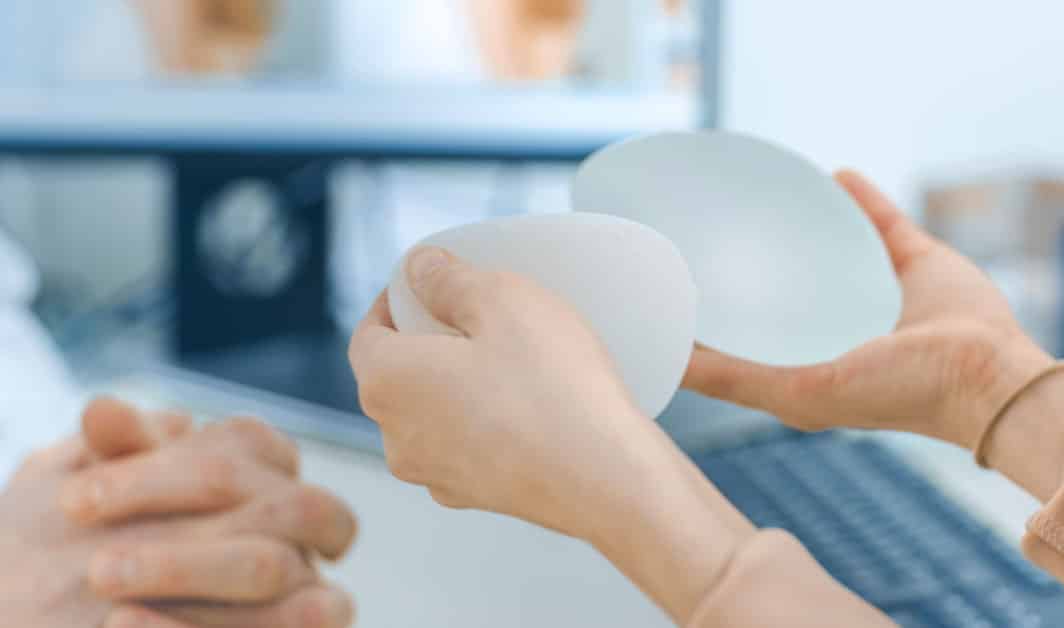
Will My Breast Implants Feel Natural?
The latest options for breast implants and surgical techniques make modern breast augmentation more advanced and better for patients than the surgery ever has been before. There are many advantages to this procedure, including the fact that it can enhance your...
Dr. Cook's Practice Blog
Explore our practice blog to learn more about non-surgical treatments and plastic surgery procedures available at The Whole Beauty® Institute. Get tips and advice, and discover new ways to improve your health and beauty.
Dr. Cook's HealthGems Blog
Dr. John Q. Cook shares his personal thoughts on well-being, quality of life, and more in HealthGems—from his decades of experience in the industry, studying and working with advanced technology and techniques.
Whole Beauty Skincare
SkinShopMD.com was created by Board-Certified plastic surgeon, Dr. John Q. Cook, as a trusted source for high quality, medical-grade skincare products to protect and rejuvenate your skin.
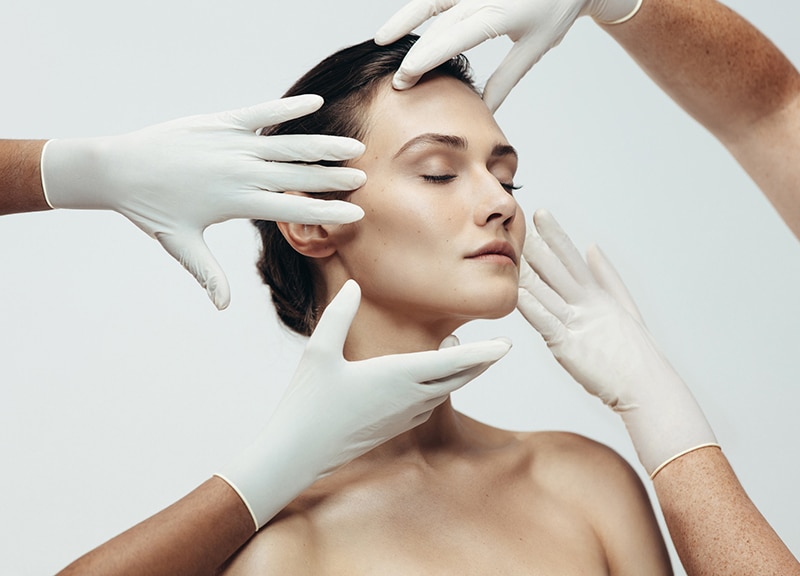
Educational Information
Get informed about cosmetic plastic surgery procedures and rejuvenating non-surgical treatments to help you make informed decisions about your desired treatment based on your aesthetic goals.
Testimonial and Practice Videos
Schedule a Consultation
Schedule a consultation with board-certified plastic surgeon, John Q. Cook, M.D., to learn more about plastic surgery solutions that may be right for you based on your aesthetic goals.
"*" indicates required fields
Our Office Locations
Our locations in the Gold Coast of Chicago and Winnetka in the North Shore reflect our commitment to convenient and discrete concierge-level service.
Chicago Office
737 North Michigan Ave., Suite 760 Chicago IL 60611 (312) 751-2112 Entrance at 151 E. Chicago Avenue
Winnetka Office
118 Green Bay Road Winnetka IL 60093 (847) 446-7562
Located directly across from Indian Hill Metra Station



